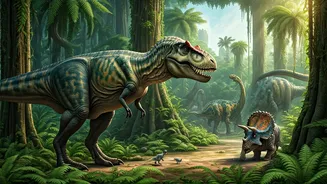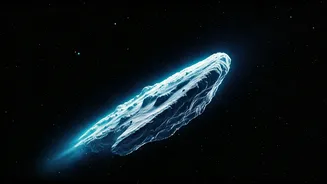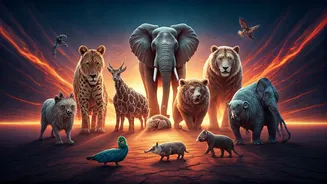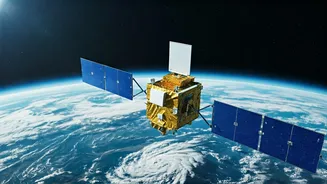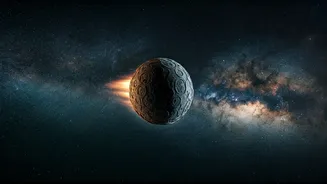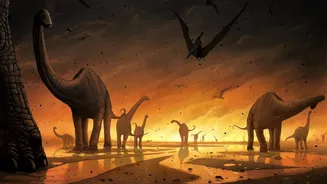A World Reimagined
The Late Cretaceous period, often painted as a time of decline for dinosaurs, is being significantly reassessed thanks to new fossil analysis. The prevailing
view of dwindling dinosaur populations before the asteroid impact is now challenged by evidence suggesting a vibrant and diverse ecosystem. This recent research presents a compelling narrative of dinosaurs flourishing in the very last days of their reign, painting a picture vastly different from earlier assumptions. The implications are significant, as they challenge long-held beliefs about the factors that led to the extinction of these ancient giants. Understanding the true picture of their final days is key to unlocking the full story. The environment in which these dinosaurs existed was also complex. The climate varied and supported a wide array of plant life, which in turn sustained a diverse population of herbivores. This created a complex web of life that included many different types of dinosaurs. This discovery sheds light on the last years of these animals, offering a glimpse into the diverse dinosaurs that roamed the Earth before their extinction.
Diverse Dinosaur Species
The recent fossil finds reveal a remarkable array of dinosaur species, dispelling the notion of a dwindling population. The new evidence indicates that a wide variety of dinosaurs coexisted, each with unique characteristics and ecological roles. The discoveries include a range of herbivorous dinosaurs that grazed on the abundant vegetation, as well as several different types of carnivorous dinosaurs that hunted and preyed on others. There were various sizes and shapes, indicating that dinosaurs continued to evolve and diversify until the very end. This diversity suggests a thriving ecosystem, where different dinosaur species adapted to a variety of environments. The latest research provides insights into the interactions among these different species. Understanding their relationships is a crucial element for reconstructing the past and finding out how dinosaurs survived in their time. The fossils not only illuminate the types of dinosaurs that lived then but also provide valuable information on their behaviors. From social structures to eating habits, the ongoing research offers a more complete understanding of dinosaur life.
Thriving Until the End
Contrary to the previous assumptions, the evidence suggests that dinosaurs were not in a state of decline. Instead, the fossils point towards a dynamic and thriving population, flourishing until the very impact of the asteroid. The resilience of these creatures, despite facing various environmental challenges, is a testament to their adaptability and their success. The analysis shows that dinosaurs were not just surviving; they were actively evolving and adapting to their surroundings. The findings are especially significant as they underscore the catastrophic nature of the extinction event. The suddenness of their demise, after millions of years of prosperity, highlights the immense impact of the asteroid and the global devastation it caused. The dinosaurs seemed to be doing well just before the end. The flourishing state of the dinosaur population presents a new perspective on the catastrophic event. It underscores how quickly the asteroid brought the reign of these ancient giants to an abrupt end. The findings contribute to a deeper understanding of the fragility of even the most successful species in the face of unforeseen catastrophic events.
